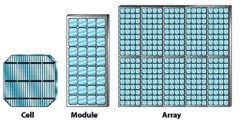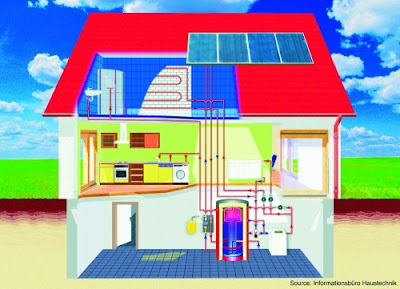 |
The basic building unit of PV technology is the photovoltaic cell (PV cell). PV cells are made of a semiconductor material, typically silicon, which is treated chemically. When light hits the cell, a field of electricity is created within the layers causing the electricity to flow. This "photovoltaic effect" results in direct current (DC) electricity which is the same type of current produced by batteries.
In order to use this energy in most homes, an inverter is used to change the DC electricity to AC. Once electricity is generated, it can go to power anything in your house or be stored in batteries for later use. The greater the intensity of the light, the greater the flow across the layers and so the more electricity generated. But such a system does not necessary require direct sunlight to work.
Single PV cells are connected electrically to form PV modules, which are the building blocks of PV systems. Depending upon the application, the solar modules are typically wired together to form an array. Individual PV cells – averaging about 4 inches per side – typically converts 15% of the available solar radiation into about 1 or 2 watts of electrical power. Larger modules or arrays of modules are used to generate power for the grid.




